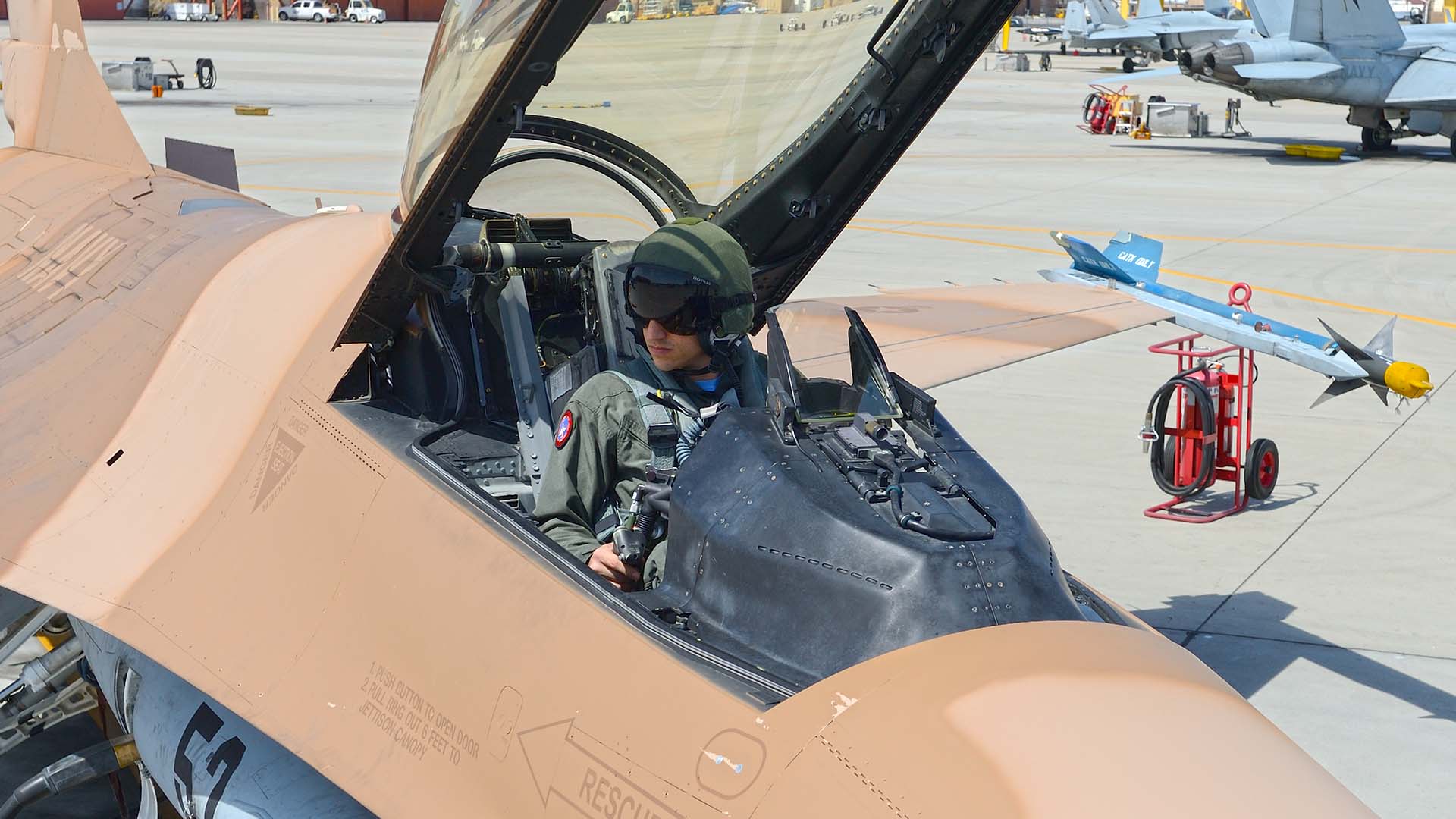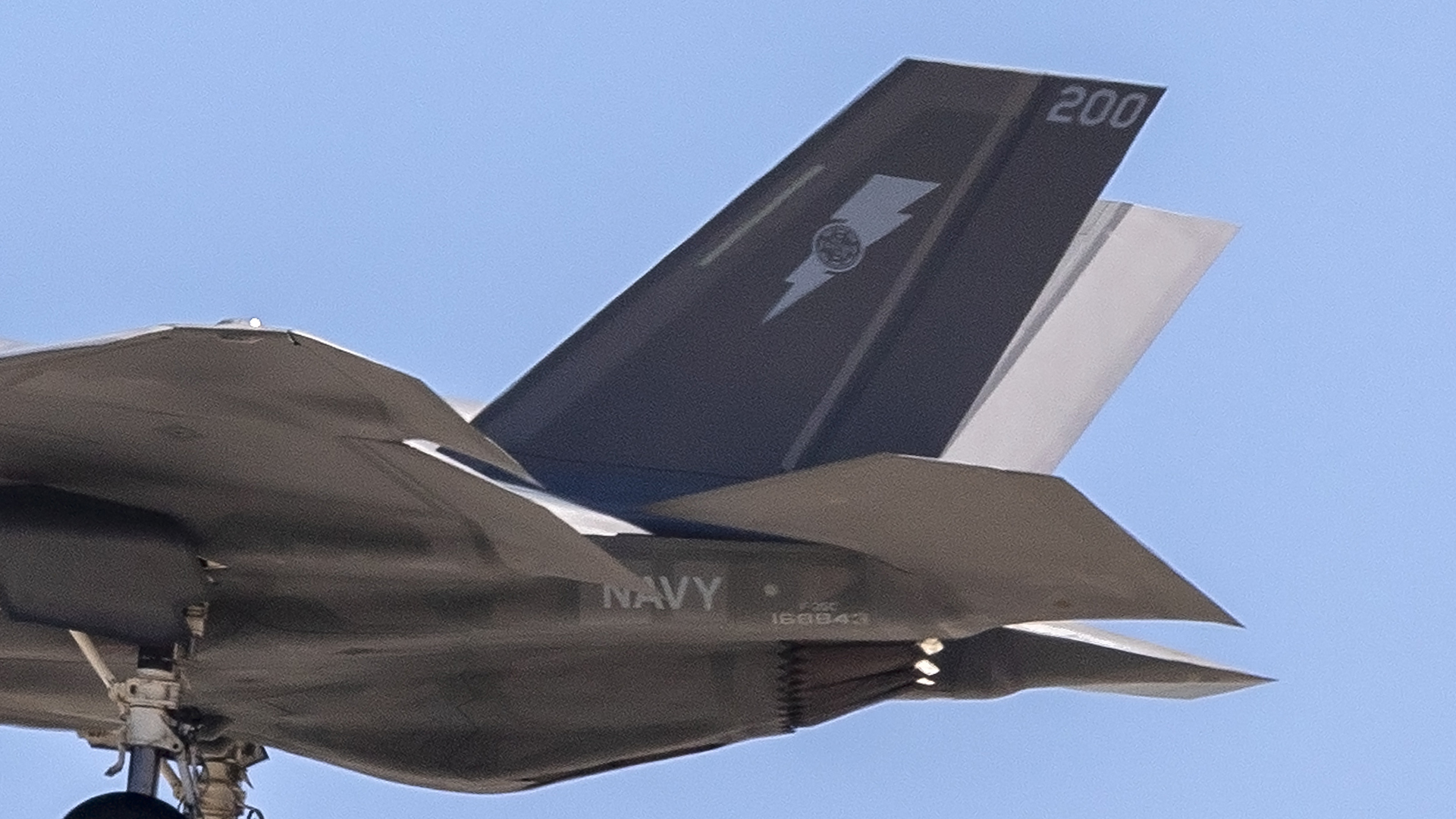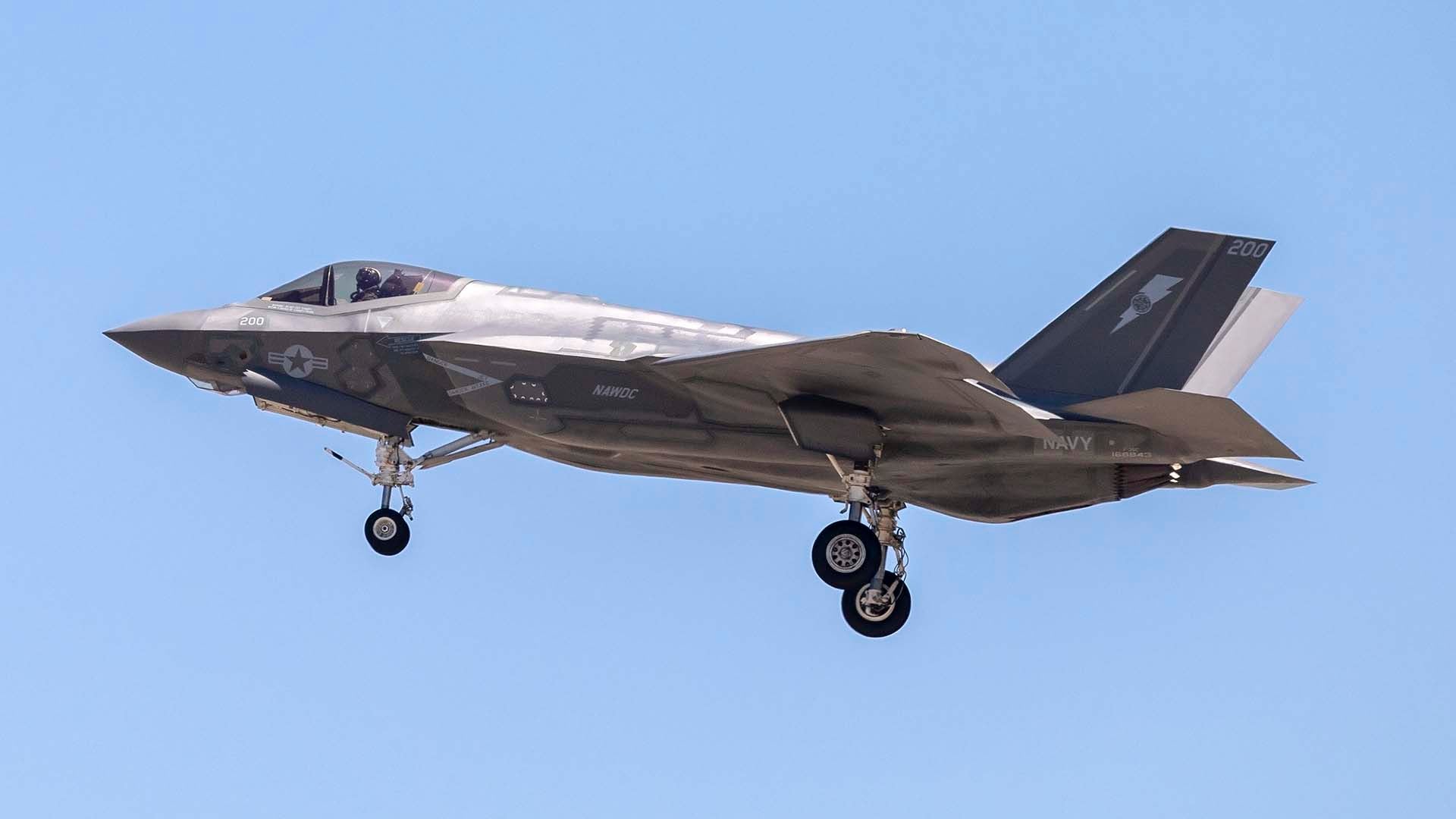The Naval Aviation Warfighting Development Center (NAWDC), the organization that includes the famous TOPGUN school, has received its first F-35C Lightning II. The aircraft touched down at Naval Air Station Fallon, Nevada, yesterday, emblazoned with the iconic lightning bolt tail flash and TOPGUN badge, albeit in predictably toned-down form, as is standard for U.S. 5th generation fighters.
Earlier this month The War Zone reported on how the first F-35 students completed the grueling U.S. Naval Fighter Weapons School (NFWS) course in May and how the advent of the F-35 has triggered one of the biggest revamps in the school’s history. TOPGUN students traditionally borrow jets from their squadrons when attending the course. The arrival of an F-35C for NAWDC means that staff instructors at TOPGUN, as well as those in other departments within the organization, will now be able to fly missions in the Lightning without having to borrow aircraft, as well.
NAWDC operates a host of different aircraft types and employs them for a range of taskings, with adversary threat presentations and tactics development being major missions. Instructors at TOPGUN currently fly a mix of F/A-18C Hornets, F/A-18E/F Super Hornets, and F-16A/B Fighting Falcons to act as adversaries in air-to-air training missions against students. The arrival of the F-35C at Fallon opens up the potential for instructors to begin replicating advanced low observable (stealthy) tactics to fully test students flying both the Super Hornet and the Lightning II.

The first NAWDC F-35C is an early-build aircraft, Bureau Number 168843, which initially served with the Navy’s first F-35 training unit, Strike Fighter Squadron 101 (VFA-101), the “Grim Reapers.” That unit was established as part of a joint-service training center at Eglin Air Force Base in Florida, from 2013. The activation of VFA-125, the “Rough Raiders,” at Naval Air Station (NAS) Lemoore, California, in January 2017 as a second Fleet Replacement Squadron led to the deactivation of VFA-101 last year. It was first delivered to VFA-101 in 2014 and likely has a low number of hours on the clock. NAWDC has always tended to receive early production aircraft for the staff to fly, with the Navy preferring to send newer aircraft to the operational fleet.
Similarly, the U.S. Air Force is looking to station early production aggressor F-35As at Nellis Air Force Base, Nevada, to provide high-end threat replication to students at its Weapons School, as well as other training events, such as Red Flag.

In keeping with its other aircraft, NAWDC’s F-35Cs could not only support TOPGUN, but they could also allow Fallon instructors to fly stealthy tactics with and against fleet squadrons when they come to the Nevada air station on pre-deployment training. More importantly, having a its own stable of F-35Cs will allow NAWDC to more rapidly test new tactics and procedures that could greatly benefit the fleet.
The arrival of a single F-35C at Fallon, which occurred with little fanfare, is a big moment for Naval aviation and another milestone in the navalized Joint Strike Fighter’s young history.
Thanks to our friend Steve Lewis from Photorecon.net for the photo.
Contact the author: Jamie@thedrive.com
